Namsa Leuba’s Ya Kala Ben photographic series are part of Scotiabank CONTACT Photography Festival, 2014 primary exhibition, Material Self: Performing the Other Within, at MOCCA
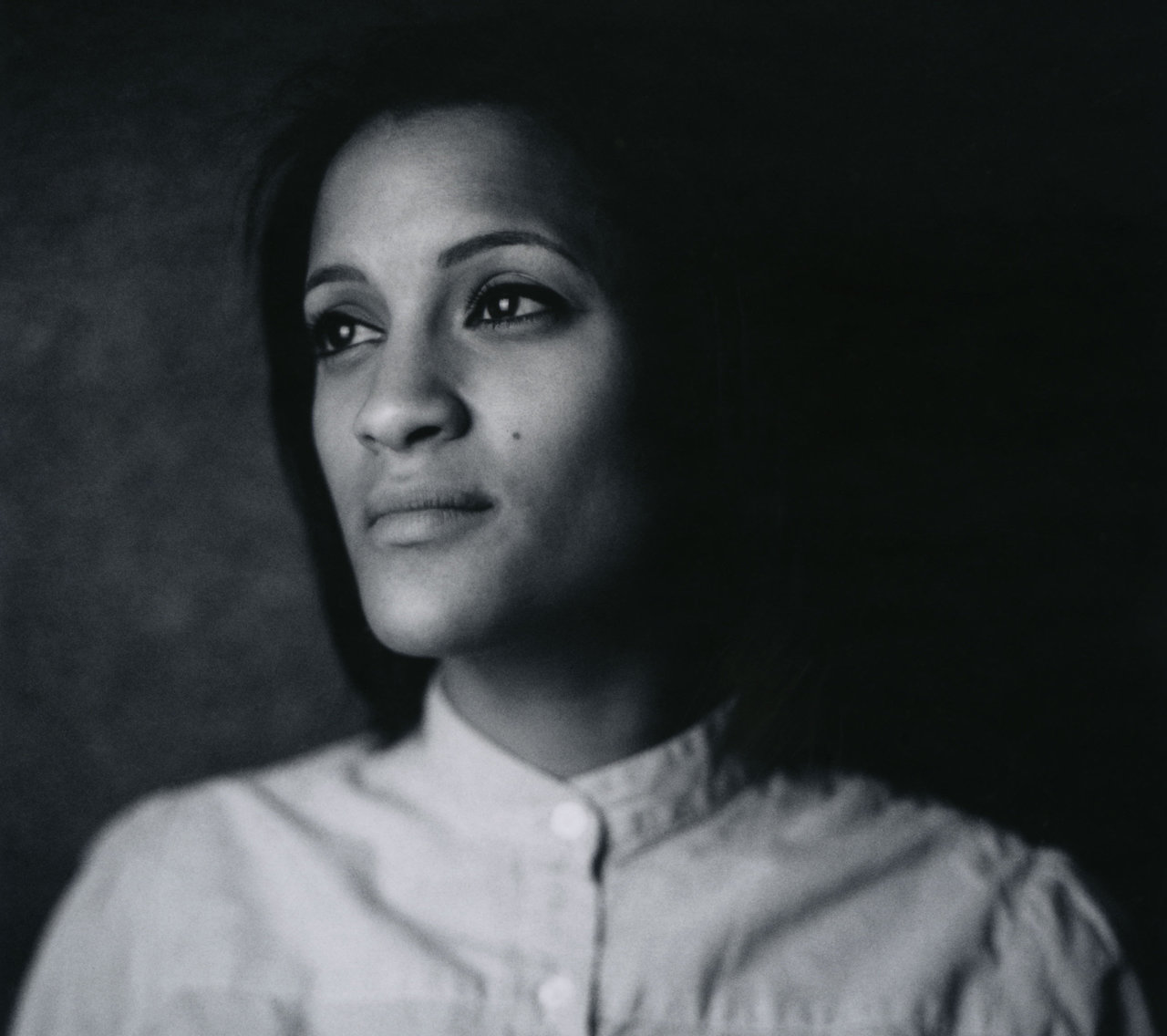 Namsa Leuba. Photo: Chris Mettraux
Namsa Leuba. Photo: Chris Mettraux
Interview with photographer Namsa Leuba (N.L) by Emese Krunák-Hajagos (E.K-H)
E.K-H: The topic for this year’s Contact Festival is Identity, involving ancestry, history and society and how the individual’s sense of self is shaped by them. How do you fell about your mixed African-European background?
N.L: I think to be a mix of cultures is a great wealth. I am an African-European, born in Switzerland. My parents instilled in me both cultures and shared their history as well. When I began at ECAL University of Art and Design, I knew that I wanted to deepen my knowledge about my African heritage and I decided to focus my work on African culture.
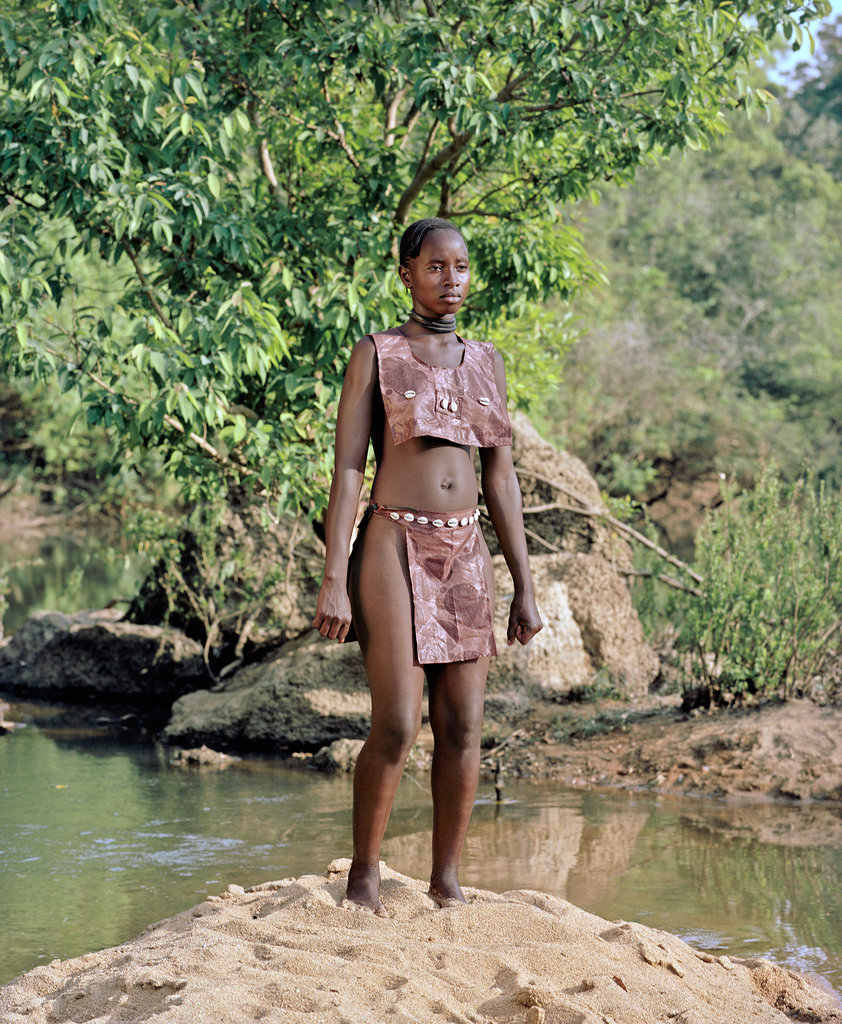 Namsa Leuba, Statuette Zoo Foret Guinee, from the series Ya Kala Ben, 2011. Courtesy of the artist.
Namsa Leuba, Statuette Zoo Foret Guinee, from the series Ya Kala Ben, 2011. Courtesy of the artist.
E.K-H: This project, called Ya Kala Ben, was shot in your mother’s home county of Guinea. How does the idea of origins and heritage influence your work?
N.L: For the last few years, my research has been focused on African identity through Western eyes. All I knew before the trip was that my mother is Muslim and that my father is Protestant. Having travelled to Guinea, other religious aspects of my mother’s country became very important to me. I discovered an animist side to the Guinean culture based on people’s respect for nature. I had been exposed to the supernatural part of Guinea ever since I was a child and I had visited ‘marabouts’ (a type of witch doctor). During this trip I took part in many ceremonies and rituals. It enabled me to be more aware of the existence and the intricacies of a parallel world to ours—the world of spirits.
The art of photography allows me to exteriorize my emotions and my past, telling my story through different shots, in some kind of syncretism.
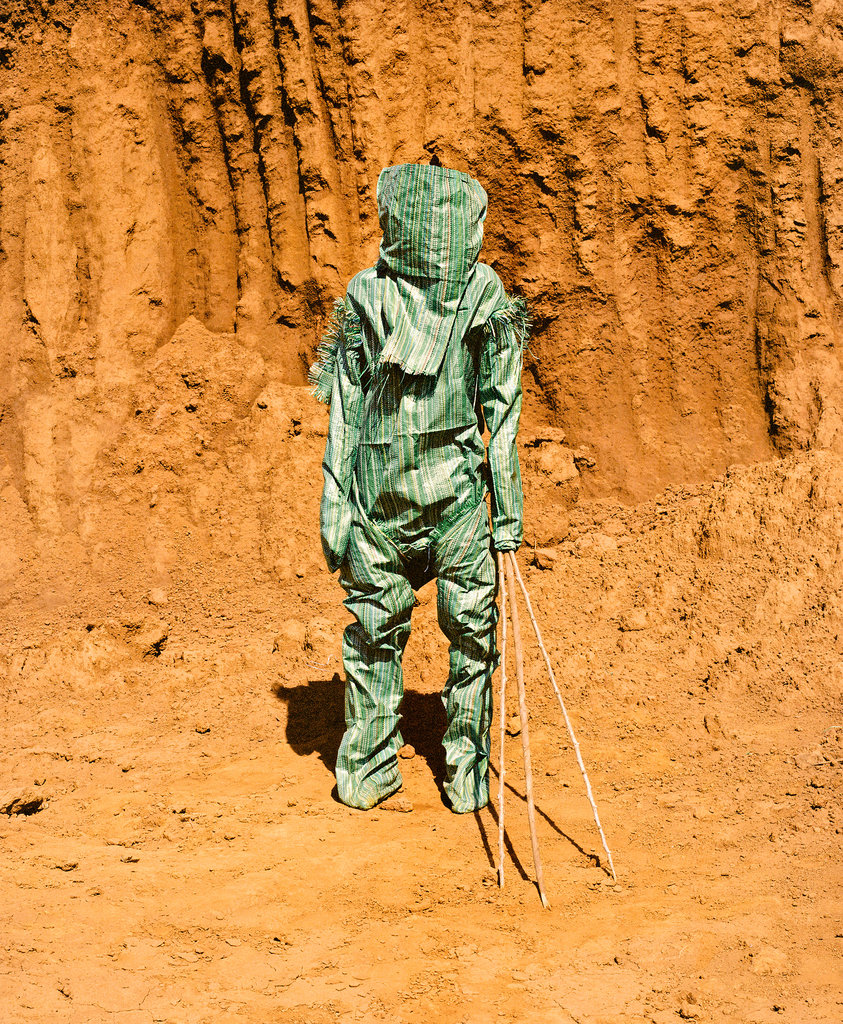 Namsa Leuba, Statuette Kafigeledio Prince Guinee, from the series Ya Kala Ben, 2011. Courtesy of the artist.
Namsa Leuba, Statuette Kafigeledio Prince Guinee, from the series Ya Kala Ben, 2011. Courtesy of the artist.
E.K-H: Many of the objects you use in your images are considered sacred. How did your models feel about the customs, the postures and you photographing them?
N.L: They were stressed most of the time because they were not used to being models and would become serious and quiet. They knew what they were representing, and they knew they had to respect the holy tools. When I got ready to shoot, I did not waste time, because my human models were recreating something holy and many times they felt uneasy. Sometimes I had to deal with violent reactions from Guineans who viewed my practises and procedures as a form of sacrilege.
 Namsa Leuba, Statuette Vodun Alimmamadou Guinee, from the series Ya Kala Ben, 2011. Courtesy of the artist.
Namsa Leuba, Statuette Vodun Alimmamadou Guinee, from the series Ya Kala Ben, 2011. Courtesy of the artist.
E.K-H: Where is your imagery coming from, especially something like Statuette Ndobi? The figure seems to be twisted, pregnant and imprisoned in those wooden sticks. Please tell me more about that image, the symbols and historical issues behind it and your intensions with it?
N.L: In this work, I was interested in the construction and deconstruction of the body as well as the depiction of the invisible. I studied ritual artifacts common to Guineans; statuettes that are part of a ceremonial structure. They are from another world. They are the roots of the living. Thereby, I sought to touch the untouchable.
I traveled through Guinea and observed different rituals and ceremonies to to find the ones I was looking for to create the series and to choose the right models. I am particularly interested the attribution of religious or mystical qualities to inanimate objects known as fetishes. The myths, the force of nature, and the deep, intuitive, impulsive culture of Africa offered me a lot of creative inspiration. My approach was to separate those sacred statuettes from their religious context in order to immortalize them in a Western framework.
 Namsa Leuba, Statuette Ndoki, Saléou Guinee, from the series Ya Kala Ben, 2011. Courtesy of the artist.
Namsa Leuba, Statuette Ndoki, Saléou Guinee, from the series Ya Kala Ben, 2011. Courtesy of the artist.
Ya Kala Ben in Malinke dialect means crossed look. Inspired by fetish statuettes, my photographs recreate the figures using models. The final image is always layered and shows not only the picture but what is behind it historically and religiously, as well as my experience. Statuette Ndobi is a fetish statuette. I put in her some medicine, magic words, and things that belong to me. I created my own ritual in assembling all my statuettes and I became the feticheur who could animate them with my mind.
E.K-H: How was your experience of reconnecting with your origins? What was it that surprised you the most?
N.L: I have always wanted to explore and share the African culture that is part of me. I knew that the best way to do that would be to visit the village founded by my great-grandfather. This pilgrimage to the land of some of my ancestors inevitably raised the sensitive question of “origin” or “origins”: mine, that of my parents, of others (my subjects) and of my approach.
What surprised me the most was the pace at which people in Guinea got things done. Everything took a long time. I found myself wasting a day waiting for people to show up. I took off my watch in order to be able to relate and learn how to work at the Guinean pace. The systemic lateness of models posed some technical problems, for instance the changing of light during the day, at certain times, made it harder to photograph.
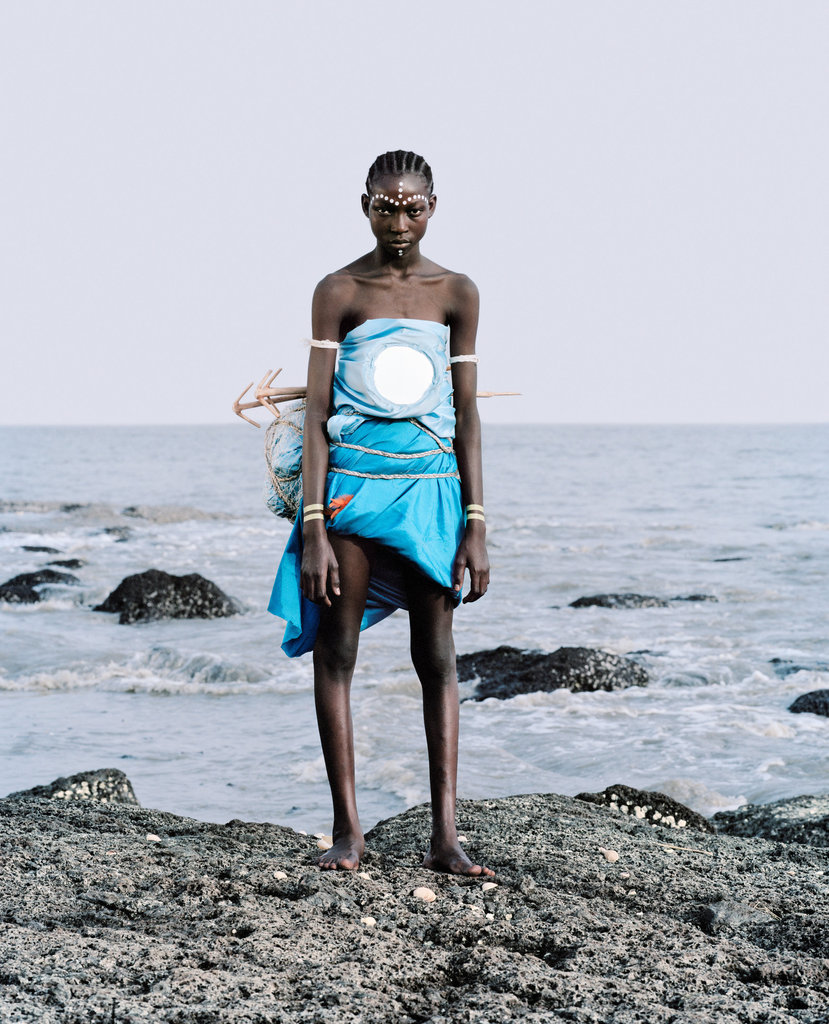 Namsa Leuba, Statuette Vili Fanta Guinee, from the series Ya Kala Ben, 2011. Courtesy of the artist.
Namsa Leuba, Statuette Vili Fanta Guinee, from the series Ya Kala Ben, 2011. Courtesy of the artist.
E.K-H: You write on your website that the “photographic eye…makes [the objects] speak differently.” What does a viewer—unfamiliar with Guinean culture—understand from your work?
N.L: The fetish objects I used as inspriation are part of a collective belief. They must not be separated from it without the risk of losing their power. They are not the gods of this community but their prayers. They are ritual tools that I have animated by staging live models and in a way desecrated by giving them another meaning—an unfamiliar meaning in the Guinean context. In reconstructing these sacred objects through the lens, I brought them into a framework meant for Western aesthetic choices and taste.
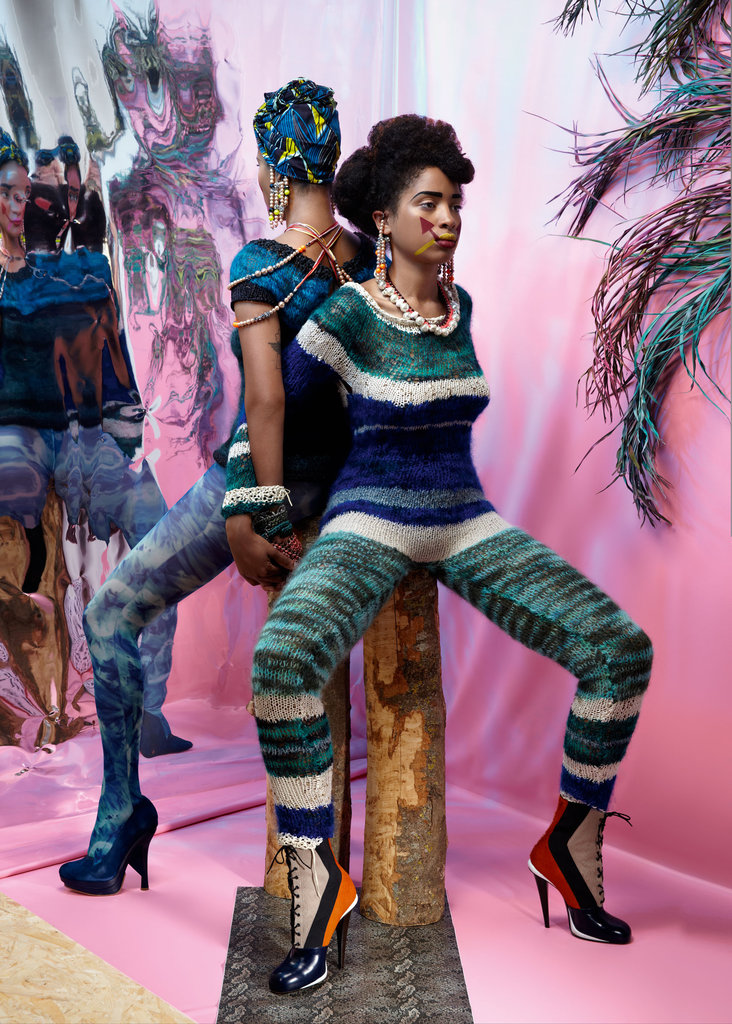 Namsa Leuba, The African Queens #7, 2012. Courtesy of the artist.
Namsa Leuba, The African Queens #7, 2012. Courtesy of the artist.
I analyze myself through the lens of my camera and I constantly question myself – which is very challenging. I travel from a spiritual ground to create the plasticity of the picture. For me spirituality is tradition; plasticity is modernism.
*Exhibition information: May 1 – June 1, 2014, Museum of Contemporary Canadian Art, 952 Queen Street West, Toronto. Gallery hours: Tue – Sun, 11-6pm.
Assistants: Aliya Bhatia and Gagan Sandhu
